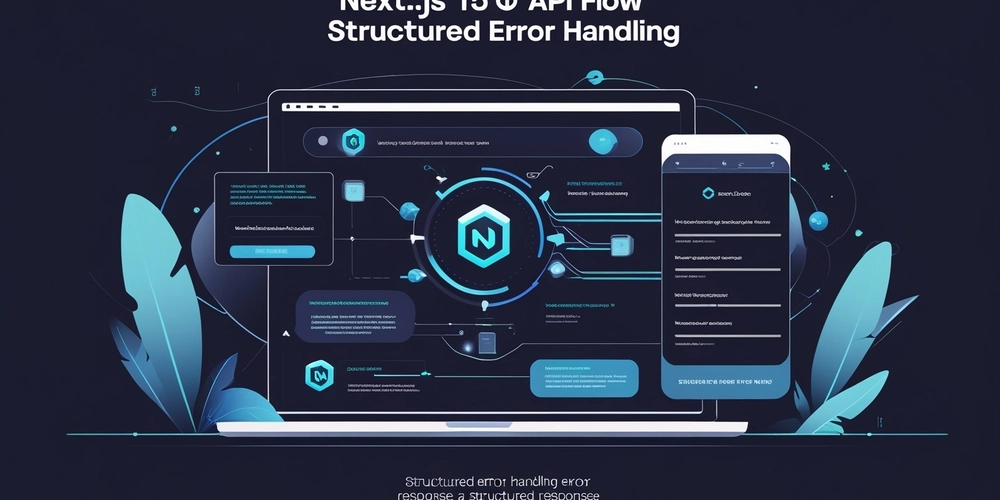Enhancing Graphics Performance with OffscreenCanvas and D3.js
Rendering complex graphics efficiently in web applications has always been a challenge due to JavaScript's single-threaded nature. The introduction of OffscreenCanvas provides a solution by enabling rendering operations in Web Workers, significantly improving performance for graphics-intensive applications. In this article, we'll explore how OffscreenCanvas works, how to use it effectively with D3.js, and its real-world application in an analytics website with multiple dashboards. Understanding OffscreenCanvas What is OffscreenCanvas? OffscreenCanvas is a browser feature that allows canvas rendering to happen outside the main thread, typically inside a Web Worker. This prevents UI thread blocking and ensures smoother animations, faster rendering, and a better user experience. Why Use OffscreenCanvas? Improved Performance: By offloading rendering tasks from the main thread, it reduces UI lag. Parallel Processing: Works efficiently with Web Workers, allowing multiple rendering tasks to run simultaneously. Responsive Applications: Ensures smooth UI interactions, even during intensive graphic operations. Better Frame Rates: Reduces dropped frames in animations and visualizations. Developing a Multi-Dashboard Analytics Website with OffscreenCanvas and D3.js Use Case: High-Performance Analytics Dashboard Consider a web-based analytics application that displays multiple dashboards, each containing charts such as bar graphs, line charts, and pie charts. The challenge is ensuring smooth performance when rendering real-time data updates without affecting the overall responsiveness of the website. Step 1: Setting Up the Main Thread In the main thread, we initialize multiple canvases and send them to a Web Worker for rendering: const worker = new Worker("dashboardWorker.js"); const canvasElements = document.querySelectorAll("canvas"); canvasElements.forEach((canvas, index) => { const offscreen = canvas.transferControlToOffscreen(); worker.postMessage({ canvas: offscreen, type: index % 2 === 0 ? "bar" : "line" }, [offscreen]); }); Step 2: Rendering Charts in a Web Worker with D3.js Create dashboardWorker.js to handle multiple chart types dynamically using D3.js: importScripts("https://d3js.org/d3.v7.min.js"); self.onmessage = function(event) { const { canvas, type } = event.data; const ctx = canvas.getContext("2d"); function drawBarChart() { ctx.clearRect(0, 0, canvas.width, canvas.height); const data = [10, 20, 30, 40, 50]; data.forEach((d, i) => { ctx.fillStyle = "blue"; ctx.fillRect(i * 50, canvas.height - d * 5, 40, d * 5); }); } function drawLineChart() { ctx.clearRect(0, 0, canvas.width, canvas.height); const data = [10, 20, 30, 40, 50]; ctx.strokeStyle = "red"; ctx.beginPath(); ctx.moveTo(0, canvas.height - data[0] * 5); data.forEach((d, i) => { ctx.lineTo(i * 50, canvas.height - d * 5); }); ctx.stroke(); } if (type === "bar") { drawBarChart(); } else { drawLineChart(); } }; Why This Works Well for an Analytics Website Multiple dashboards rendered in parallel without blocking UI interactions. Scalability – New charts can be added seamlessly without degrading performance. Smooth user experience by running visualizations in Web Workers. Practical Applications of OffscreenCanvas in Analytics Websites 1. Real-Time Data Visualization For dashboards that update frequently with real-time data, OffscreenCanvas ensures that UI interactions remain smooth while charts update dynamically. 2. Financial Market Analysis Stock trading and cryptocurrency platforms require rapid chart updates. OffscreenCanvas enables live updates without performance degradation. 3. Website Traffic Monitoring Analytics dashboards tracking website visitors, session durations, and heatmaps can benefit from OffscreenCanvas to render multiple visualizations efficiently. 4. AI-Powered Predictive Analytics Machine learning models predicting trends can use OffscreenCanvas to display forecasts, helping users make data-driven decisions. Performance Comparison A simple benchmark comparing rendering with and without OffscreenCanvas demonstrates its advantages: Method Frame Rate (FPS) Main Thread Load Traditional Canvas ~30 FPS High OffscreenCanvas + Web Worker ~60 FPS Low This improvement is due to reduced workload on the main thread, leading to smoother and more responsive applications. Browser Support As of now, OffscreenCanvas is supported in major browsers like Chrome, Edge, and Firefox. However, it has limited support in Safari. To check browser compatibility, use: if ('OffscreenCanvas' in window) { console.log("OffscreenCanvas is supported

Rendering complex graphics efficiently in web applications has always been a challenge due to JavaScript's single-threaded nature. The introduction of OffscreenCanvas provides a solution by enabling rendering operations in Web Workers, significantly improving performance for graphics-intensive applications. In this article, we'll explore how OffscreenCanvas works, how to use it effectively with D3.js, and its real-world application in an analytics website with multiple dashboards.
Understanding OffscreenCanvas
What is OffscreenCanvas?
OffscreenCanvas is a browser feature that allows canvas rendering to happen outside the main thread, typically inside a Web Worker. This prevents UI thread blocking and ensures smoother animations, faster rendering, and a better user experience.
Why Use OffscreenCanvas?
- Improved Performance: By offloading rendering tasks from the main thread, it reduces UI lag.
- Parallel Processing: Works efficiently with Web Workers, allowing multiple rendering tasks to run simultaneously.
- Responsive Applications: Ensures smooth UI interactions, even during intensive graphic operations.
- Better Frame Rates: Reduces dropped frames in animations and visualizations.
Developing a Multi-Dashboard Analytics Website with OffscreenCanvas and D3.js
Use Case: High-Performance Analytics Dashboard
Consider a web-based analytics application that displays multiple dashboards, each containing charts such as bar graphs, line charts, and pie charts. The challenge is ensuring smooth performance when rendering real-time data updates without affecting the overall responsiveness of the website.
Step 1: Setting Up the Main Thread
In the main thread, we initialize multiple canvases and send them to a Web Worker for rendering:
const worker = new Worker("dashboardWorker.js");
const canvasElements = document.querySelectorAll("canvas");
canvasElements.forEach((canvas, index) => {
const offscreen = canvas.transferControlToOffscreen();
worker.postMessage({ canvas: offscreen, type: index % 2 === 0 ? "bar" : "line" }, [offscreen]);
});
Step 2: Rendering Charts in a Web Worker with D3.js
Create dashboardWorker.js to handle multiple chart types dynamically using D3.js:
importScripts("https://d3js.org/d3.v7.min.js");
self.onmessage = function(event) {
const { canvas, type } = event.data;
const ctx = canvas.getContext("2d");
function drawBarChart() {
ctx.clearRect(0, 0, canvas.width, canvas.height);
const data = [10, 20, 30, 40, 50];
data.forEach((d, i) => {
ctx.fillStyle = "blue";
ctx.fillRect(i * 50, canvas.height - d * 5, 40, d * 5);
});
}
function drawLineChart() {
ctx.clearRect(0, 0, canvas.width, canvas.height);
const data = [10, 20, 30, 40, 50];
ctx.strokeStyle = "red";
ctx.beginPath();
ctx.moveTo(0, canvas.height - data[0] * 5);
data.forEach((d, i) => {
ctx.lineTo(i * 50, canvas.height - d * 5);
});
ctx.stroke();
}
if (type === "bar") {
drawBarChart();
} else {
drawLineChart();
}
};
Why This Works Well for an Analytics Website
- Multiple dashboards rendered in parallel without blocking UI interactions.
- Scalability – New charts can be added seamlessly without degrading performance.
- Smooth user experience by running visualizations in Web Workers.
Practical Applications of OffscreenCanvas in Analytics Websites
1. Real-Time Data Visualization
For dashboards that update frequently with real-time data, OffscreenCanvas ensures that UI interactions remain smooth while charts update dynamically.
2. Financial Market Analysis
Stock trading and cryptocurrency platforms require rapid chart updates. OffscreenCanvas enables live updates without performance degradation.
3. Website Traffic Monitoring
Analytics dashboards tracking website visitors, session durations, and heatmaps can benefit from OffscreenCanvas to render multiple visualizations efficiently.
4. AI-Powered Predictive Analytics
Machine learning models predicting trends can use OffscreenCanvas to display forecasts, helping users make data-driven decisions.
Performance Comparison
A simple benchmark comparing rendering with and without OffscreenCanvas demonstrates its advantages:
| Method | Frame Rate (FPS) | Main Thread Load |
|---|---|---|
| Traditional Canvas | ~30 FPS | High |
| OffscreenCanvas + Web Worker | ~60 FPS | Low |
This improvement is due to reduced workload on the main thread, leading to smoother and more responsive applications.
Browser Support
As of now, OffscreenCanvas is supported in major browsers like Chrome, Edge, and Firefox. However, it has limited support in Safari. To check browser compatibility, use:
if ('OffscreenCanvas' in window) {
console.log("OffscreenCanvas is supported!");
} else {
console.log("Your browser does not support OffscreenCanvas.");
}
Conclusion
OffscreenCanvas, combined with D3.js, is a powerful tool for building high-performance analytics dashboards. By moving rendering operations to Web Workers, it significantly enhances performance, improves responsiveness, and ensures seamless user experiences.
Are you using OffscreenCanvas in your analytics projects? Share your experience in the comments!
About the Author
I am a Lead software engineer specializing in JavaScript, Web Performance Optimization, and Data Visualization. Connect with me on LinkedIn or check out my portfolio here.











































































































































































![[The AI Show Episode 142]: ChatGPT’s New Image Generator, Studio Ghibli Craze and Backlash, Gemini 2.5, OpenAI Academy, 4o Updates, Vibe Marketing & xAI Acquires X](https://www.marketingaiinstitute.com/hubfs/ep%20142%20cover.png)




























































































































![[DEALS] The Premium Learn to Code Certification Bundle (97% off) & Other Deals Up To 98% Off – Offers End Soon!](https://www.javacodegeeks.com/wp-content/uploads/2012/12/jcg-logo.jpg)


![From drop-out to software architect with Jason Lengstorf [Podcast #167]](https://cdn.hashnode.com/res/hashnode/image/upload/v1743796461357/f3d19cd7-e6f5-4d7c-8bfc-eb974bc8da68.png?#)








































































































.png?#)

































_Christophe_Coat_Alamy.jpg?#)
 (1).webp?#)





































































































![Apple Considers Delaying Smart Home Hub Until 2026 [Gurman]](https://www.iclarified.com/images/news/96946/96946/96946-640.jpg)
![iPhone 17 Pro Won't Feature Two-Toned Back [Gurman]](https://www.iclarified.com/images/news/96944/96944/96944-640.jpg)
![Tariffs Threaten Apple's $999 iPhone Price Point in the U.S. [Gurman]](https://www.iclarified.com/images/news/96943/96943/96943-640.jpg)




































































































































